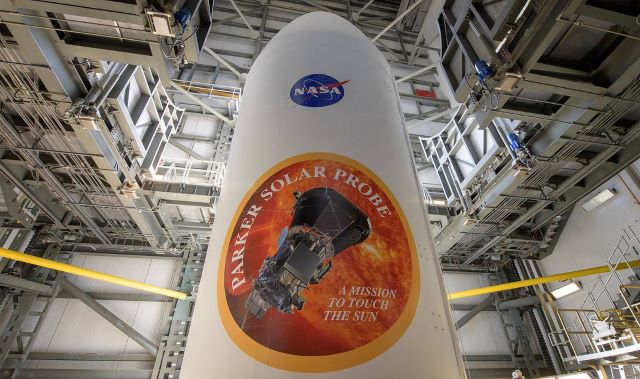
This week, NASA’s Sun and Space team announced on social media that the Parker Solar Probe made its closest-ever approach to the Sun. Nicola Fox, the associate administrator of NASA’s Science Mission Directorate, shared a video online, stating:
“Right now, the Parker Solar Probe has achieved the goal for which we designed the mission. At this moment, the Parker Solar Probe is flying closer to a star than ever before.”
Fox explained that when the Parker Solar Probe was launched in 2018, it seemed distant. However, by December 2024, all necessary operations, including twenty-one flawless orbits, were completed.
The spacecraft is now just 3.8 million miles from the Sun’s surface, setting new records.
Fox described this achievement as a total “Yay, we did it!” moment in the study of the Sun, its planets, and the surrounding space as a dynamic system.
According to a press release from the Johns Hopkins University Applied Physics Laboratory, the Parker Solar Probe was developed as part of NASA’s Living With a Star program, which explores aspects of the Sun-Earth system that directly impact life and society.
This program is managed by NASA’s Goddard Space Flight Center in Greenbelt, Maryland, under NASA’s Science Mission Directorate in Washington. The Johns Hopkins Applied Physics Laboratory designed, built, and operates the spacecraft, overseeing the mission for NASA.
The mission operations team at the Johns Hopkins Applied Physics Laboratory (APL) in Laurel, Maryland, received a signal just before midnight EST on December 26.
The team was out of contact with the spacecraft during its closest approach on December 24. During this encounter, the Parker Solar Probe came within 3.8 million miles of the solar surface while traveling at approximately 430,000 miles per hour.
The spacecraft is expected to return detailed telemetry data about its status on January 1.
This close-up study of the Sun enables the Parker Solar Probe to make measurements that help scientists better understand how material in this region is heated to millions of degrees, trace the origin of the solar wind (a continuous flow of material escaping the Sun), and discover how energetic particles are accelerated to near-light speed.
Previous close passes have helped scientists identify the origins of structures in the solar wind and map the outer boundary of the Sun’s atmosphere.
To prevent the spacecraft from melting, where temperatures can exceed a million degrees Fahrenheit, it is equipped with a heat shield that protects it from the Sun’s intense light while allowing coronal material to “touch” the spacecraft.
According to NASA, gathering information about processes near the Sun can improve our understanding of how space weather affects astronauts, interferes with satellite orbits, and influences the Sun’s effect on our space environment.
NASA’s Parker Solar Probe carries over 1.1 million names submitted by the public.
In March 2018, Americans were invited to submit names to be sent to the Sun aboard humanity’s first mission to “touch” a star. A memory card containing these names was installed on the spacecraft on May 18, 2018.
This card was mounted on a plaque dedicated to Eugene Parker, the mission’s namesake, and features a quote from him alongside photos and a copy of his groundbreaking 1958 scientific paper.
Parker first theorized the existence of the solar wind and proposed several concepts regarding how stars, including our Sun, emit material.
While our understanding of the Sun and the solar wind has greatly improved since Parker’s initial theories, many questions still remain unanswered.
Read more Parker Solar Probe stories here:
HAPPENING RIGHT NOW: NASA’s Parker Solar Probe is making its closest-ever approach to the Sun! 🛰️ ☀️
More on this historic moment from @NASAScienceAA Nicola Fox 👇
Follow Parker’s journey: https://t.co/MtDPCEK6w6#3point8 pic.twitter.com/Bq85XFa1QS
— NASA Sun & Space (@NASASun) December 24, 2024
In space, if you want to get anywhere you need speed. While Santa zooms around the world (&visits the @Space_Station!) at ~11.2 million mph, #ParkerSolarProbe set a new record today: 430,000 mph near the Sun! 🚀☀️@NoradSanta #NORADTracksSanta #NTS24 @NASASun @NASASolarSystem pic.twitter.com/BtVTU9bhjY
— Johns Hopkins APL (@JHUAPL) December 24, 2024
The U.S. Army Corps of Engineers has been tasked with…
Brown and Caldwell, a leading environmental engineering and construction firm,…
Humboldt State University, one of four campuses within the California…